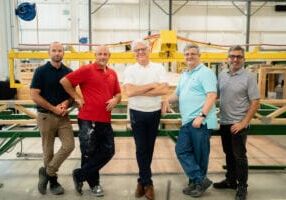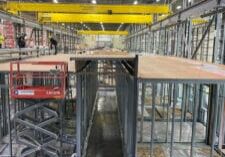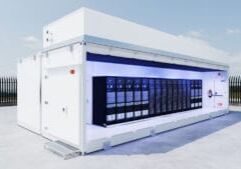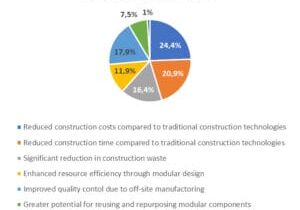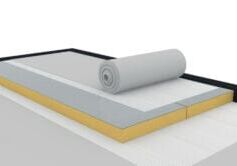How Rebel Concept Harnesses AI as a Design Tool to Improve the DFMA Process
Kris Droszcz embraces the term rebel, pushing the boundaries of what is possible within the architecture industry, modular, DFMA, and even in his family. Architecture runs in the Droszcz family, as Kris’s great-great-grandfather was also an architect, providing services to the city of Warsaw in the years before World War II.
In the 80s, his father picked up the practice again. That’s how Kris obtained hands-on experience, working first as an intern with his father’s company and a few other studios in the U.K. and Poland before becoming a full-time architect and establishing Rebel Concept in 2011. Not satisfied with the existing projects at the firm, he wanted to expand the company’s design prowess by developing one of the first modular buildings in Poland—INFO BOX in Gdynia.
Two years later, Rebel Module was created, as the first iteration of what has now become three successful companies headed by Kris. Initially, Rebel Module covered the A-to-Z of modular, from concept and design to manufacturing modules.
“With the Rebel Module factory, we had R&D, and we had a lot of different government grants that helped us grow,” said Kris. “Then we figured out that we could do so much more than just design and build for ourselves. We could create a DfMA division to get external clients, while sharing the knowledge and the technology. And that’s what we did.”
That’s how Rebel Concept was born, as a new company that focused on both traditional architecture services and modular design work. This year, Rebel Concept spun off its DfMA arm, now known as Rebel DFMA and doing business in the U.S. and the European Union (EU).
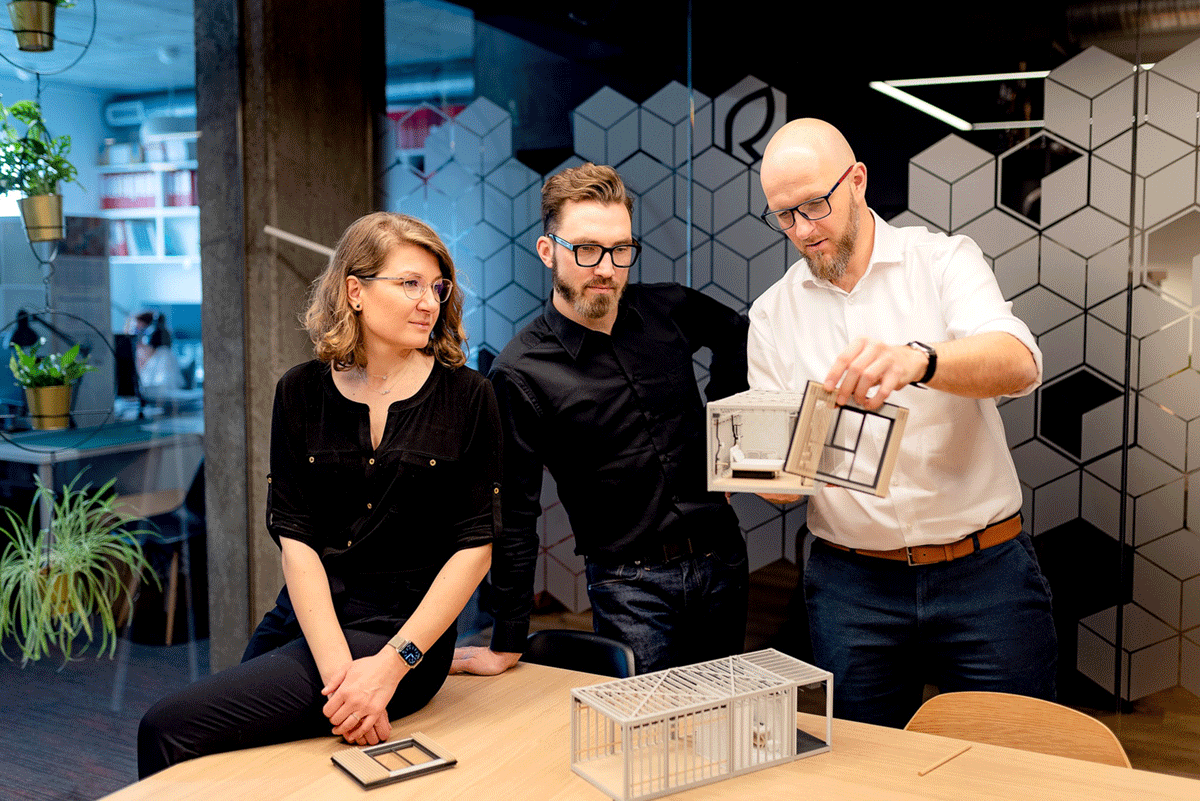
Rebel Concept’s founder and CEO, Kris Droszcz (right), believes in the potential of AI, but stresses that it’s not ready to be fully trusted.
At Rebel Concept, Change is a Constant
Rebel Concept’s focus remains on design, as their main offerings revolve around architecture, structure, design, MEP, and other multidisciplinary work worldwide. The company has completed projects as far as Japan, Saudi Arabia, on top of a host of projects in Europe and the U.S. However, Kris notes that the Rebel Concept history and experience across the entire design and manufacturing spectrum that makes it stand out.
“Most architecture and engineering companies that do DfMA are just made of engineers in architecture firms,” he said. “Basically, they are not manufacturers or tech developers. They aren’t programming their software to create standardized solutions. [At Rebel Concept,] we are finding engineers that are keen on changing, developing, and creating efficiencies using Revit or other Autodesk software.”
Part of the increase in speed and efficiency in their design work is due to the company’s embrace of artificial intelligence (AI).

AI as the Ultimate Design Tool and Assistant
The push to use AI company-wide came about a year and a half ago, after employees were using the image generation tools for fun—mostly for birthday cards.
“It came about very naturally,” said Kris. “Like ivy, it just spread around…There is no single person in our company that isn’t using AI at the moment.”
AI has allowed the engineers at Rebel Concept to program faster, sync files, and move them around with ease. As a result, they have written a host of their own add-ons to Revit in Dynamo and Python languages, expediting the coding using AI.
“They’re writing DfMA scripts for a repetitive windows facade, for example,” said Kris. “So, they just create this script that you click and the whole part of that building element is designed in a minute. And you can use this model in the BIM [process] because it’s not a fake AI design. It’s [created] through Revit, but we’re using AI as a tool, the same as using a mouse and keyboard.”
However, Kris is quick to note that using AI as a coding supplement to create specific add-ons is not new.
“I’m not saying we’re alone in that,” he said. “I mean, there aren't a lot of companies that are competitors trying to achieve the same, but there are a few.” Kris also says that their implementation of AI would not be the same without the ability to see the design through to fabrication, on top of their years of experience in the modular industry.
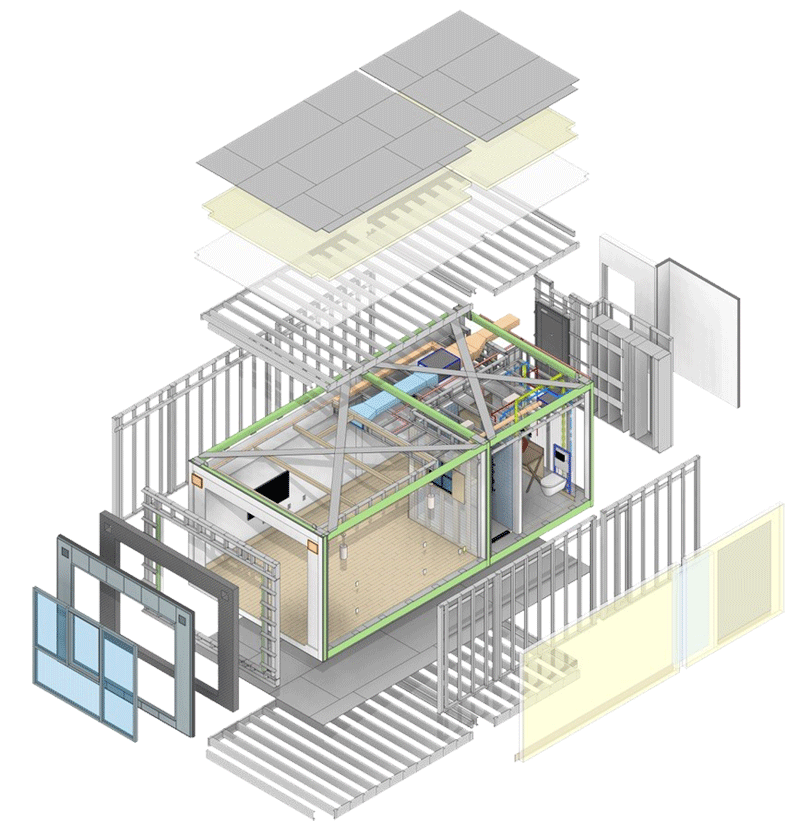
“We have a lot of scripts and a lot of automation processes,” he said. “We can provide DfMA services three, four times faster than regular DfMA in Revit or AutoCAD [without add-ons]. So we are faster because AI and our scripts help us go faster. That’s our secret weapon.”
Rebel Concept’s engineering team is also pioneering the use of AI to assist in the quality control process, though it is limited. “While it doesn’t substitute our engineers while we’re working,” said Kris. “But I think it’s [basic enough] to point out some collisions, crashes, clashes, whatever in the project. Then we aren’t wasting time on two, three people working 24/7 on checking the drawings. We are not using it entirely yet, but we’re trying to figure out the best way to actually use AI in a QC process. We don’t trust it yet.”
AI’s analytical powers have also proven useful in digging through data-heavy projects like high-BIM-level digital twin files. Kris says, for example, AI can scan building information and modeling data in one project to create a new 1-million-square-foot building with the same parameters. By contrast, “it would take around 20 people working around the MEP structure, engineering, architects, and more.”
“Here you can use AI to do it in minutes or hours,” he said. “It will just filter and give you information, whatever you need, whenever you want it. The speed of analyzing data is a great improvement.”
On the whole, AI has freed up employee time at Rebel Concept, giving everyone the ability to refocus their energies on more resource-intensive tasks. It has also transformed the way everyone communicates in the company, as AI has now become a part of their day-to-day operations.
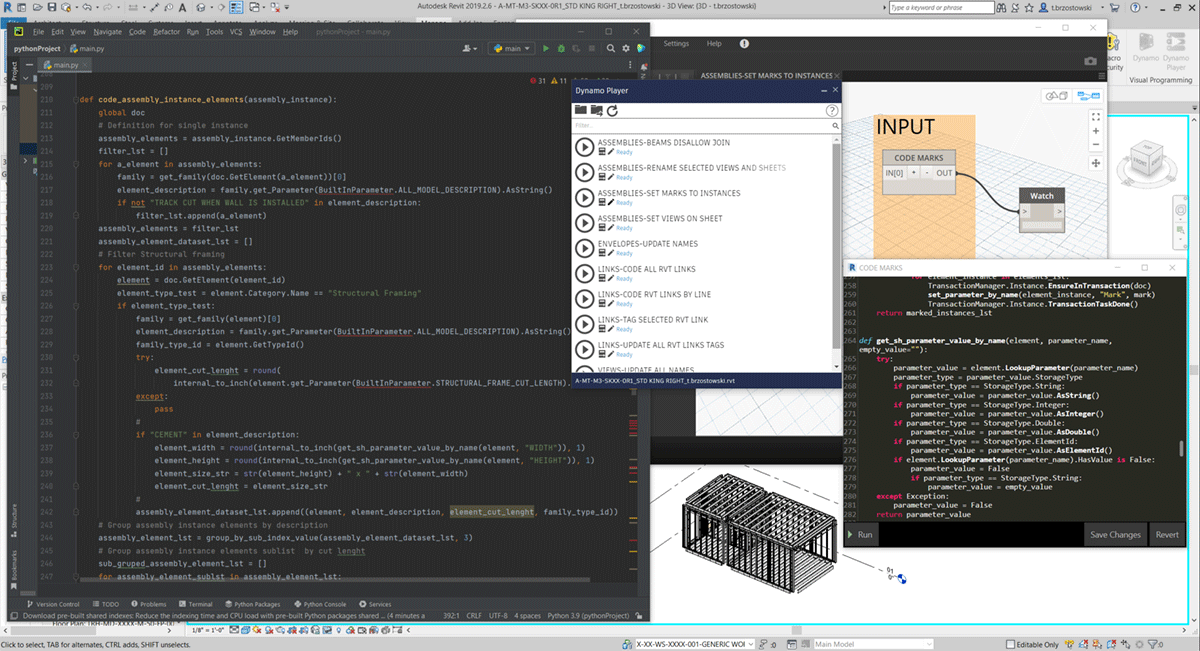
Putting the AI in Admin at Rebel Concept
Rebel Concept, like many other companies, uses AI as a tool to summarize calls and conversations, as it listens in to help provide key points post-calls. It has also proven to be a useful tool for getting projects launched or conveying basic design concepts.
“We just use it as some kind of a supplement for how to get things done a little bit quicker,” said Kris. “And we’re not forcing clients to use it either. We just naturally use it when we feel it’s necessary or we just feel the efficiency would go up.”
Kris recalls one helpful scenario where AI helped deliver ideas across languages and cultures. Using DALL-E and Midjourney, the company created basic mood boards to illustrate some broad design ideas to show their Japanese clients.
“We flew there, spent two weeks talking with architects and everybody around, but then you have to put the design together according to the clients needs,” he said. The AI tools provided some simplified mood boards that helped convey some “very simple conceptual ideas, and then our architect took over and redesigned everything.”
AI is Not a Main Tool, but a Supplement
Even as the company embraces AI, there remains a lot of opportunity for improvement. As a CEO, Kris hopes to see the evolution of AI as an intelligent assistant to bridge the connections between communication and scheduling software, for example.
“If it can create a synergy between the different [programs] you use to get your calendar setup and record calls to create an environment that would listen and learn, for me, personally, that would be really cool,” he said.
AI also still has a ways to go before it could be used “as the right hand of a designer,” as it is hampered by the inclusion of fake data, says Kris.
“There are no design tools that operate like your guardian angel,” said Kris. It would be great to see AI “talking with the designer and designing with them.” It would free up a number of other architects and engineers to focus on other work, as AI could step in to double-check the design according to local building codes and client needs, according to Kris.
But these issues could be irrelevant in a few years, he says.
“The complexity of projects and the size of project are so large, and the technology is so complicated that AI would do it so much faster than we are,” he said. “It will control and manage the processes between the designer and the processes on the factory floor. Whatever changes are made there, it will automatically implement the changes and, let’s say, control all the build processes, integrate it into the design, and vice versa. This is something that is very hard to manage in general, and everybody’s struggling to control the manufacturing processes according to the design. And I think that’s what AI will do.”
It’s because of these advantages and drawbacks that Kris encourages businesses to adopt AI carefully.
“Start having fun with it,” he said. “But if you want to improve and become more efficient, you should try to use intelligent software solutions based on AI, but just start carefully, because it’s tempting. You may have a feeling that it does a lot of work for you, but it doesn’t. You have to check everything it does.”
About the Author: Karen P. Rivera is a freelance writer and editor with a passion for storytelling. She is a former United Nations-based reporter, with experience covering international breaking news, venture capital, emerging healthcare tech, and the video game industry.
More from Modular Advantage
Resia: Breaking All the Rules
Resia Manufacturing, a division of U.S.-based Resia, is now offering prefabricated bathroom and kitchen components to industry partners. Its hybrid fabrication facility produces more precise bathroom and kitchen components (modules) faster and at lower cost than traditional construction. Here’s how Resia Manufacturing does it.
How LINQ Modular Innovates to Bring Modular To The Market in the UAE and Beyond
LINQ Modular, with an office and three manufacturing facilities in Dubai, is a modular firm based in United Arab Emirates. The company is on a mission: to break open the housing and construction markets in the Gulf Cooperation Council (GCC) area with modular.
ModMax: Redefining Modular Construction with Confidence and Precision
ModMax was born out of frustration—frustration with five persistent pain points in modular construction: Permitting bottlenecks. Production delays. Rigid designs. Disconnect between “the office” and the field. Lack of transparency and communication.
LifeArk: Disaster-Resilient Housing from Recycled Plastic and 100-year-old Technology
Wee compares LifeArk’s housing units to Yeti coolers, as they are built similarly. Each component takes 15 to 20 minutes to manufacture, has an R-value of 40, and includes molded slots and chases for wiring, plumbing, fire sprinklers, and other utilities.
Building the Future of Modular Edge Infrastructure
The edge data center market is expanding rapidly, driven by the surge in AI workloads, IoT adoption, and the need for localized compute power. In these environments, sustainability, scalability, and reliability are non-negotiable. Cooling is among the most complex challenges for operators—and one of the most decisive factors in long-term success.
Accelerating Light-Gauge Steel Construction: A Semi-Automated Digital Workflow for Off-Site Projects
For construction professionals, the message is clear. By adopting semi-automation and digitalization, companies can deliver projects faster, more accurately, and more profitably, while also building stronger collaboration across teams. The approach is not about replacing people with machines, but about empowering people with better tools and processes.
Why Modular Data Centers Are Gaining Momentum
Artificial intelligence, high-performance computing, and edge applications push the limits of traditional “stick-built” data centers. They take years build, often struggle with high density workloads, and aren’t optimized for deployments near end users. Modular data center platforms are purpose-built to address these challenges, offering flexibility and scalability to adapt to evolving technologies, while opening new opportunities for the modular construction industry.
Supply Chain Innovation in Action: 5 Habits Every Modular Leader Should Practice
By applying these principles to supply chain practices — collaborative planning, strategic procurement, scenario modeling, digital tools, and transparent forecasting — construction leaders can build value chains that are not just efficient and agile, but truly innovative.
Exploring the Role of Modular Integrated Construction (MiC) in Advancing Circular City Principles – A Survey of Stakeholder Perspectives
The survey findings highlight the significant potential of Modular integrated Construction (MiC) in advancing the development of circular cities. By reducing costs, accelerating construction timelines, and minimizing waste generation, MiC offers a promising approach to sustainable urban development.
The Use of MS POLYMER™-Based Sealants and Adhesives in Modular Building
These products combine flexibility and elastic recovery with excellent adhesion to different substrates and have already shown their usefulness in traditional construction. Now it’s time for them to be put to use in the modular construction industry.



